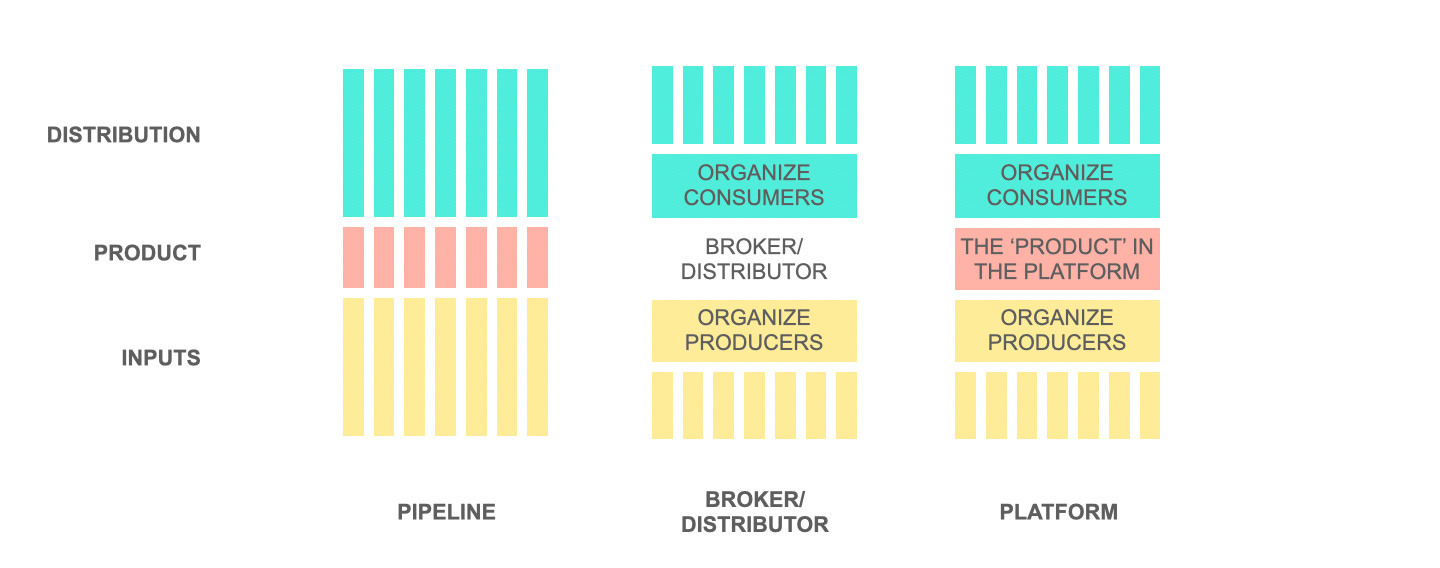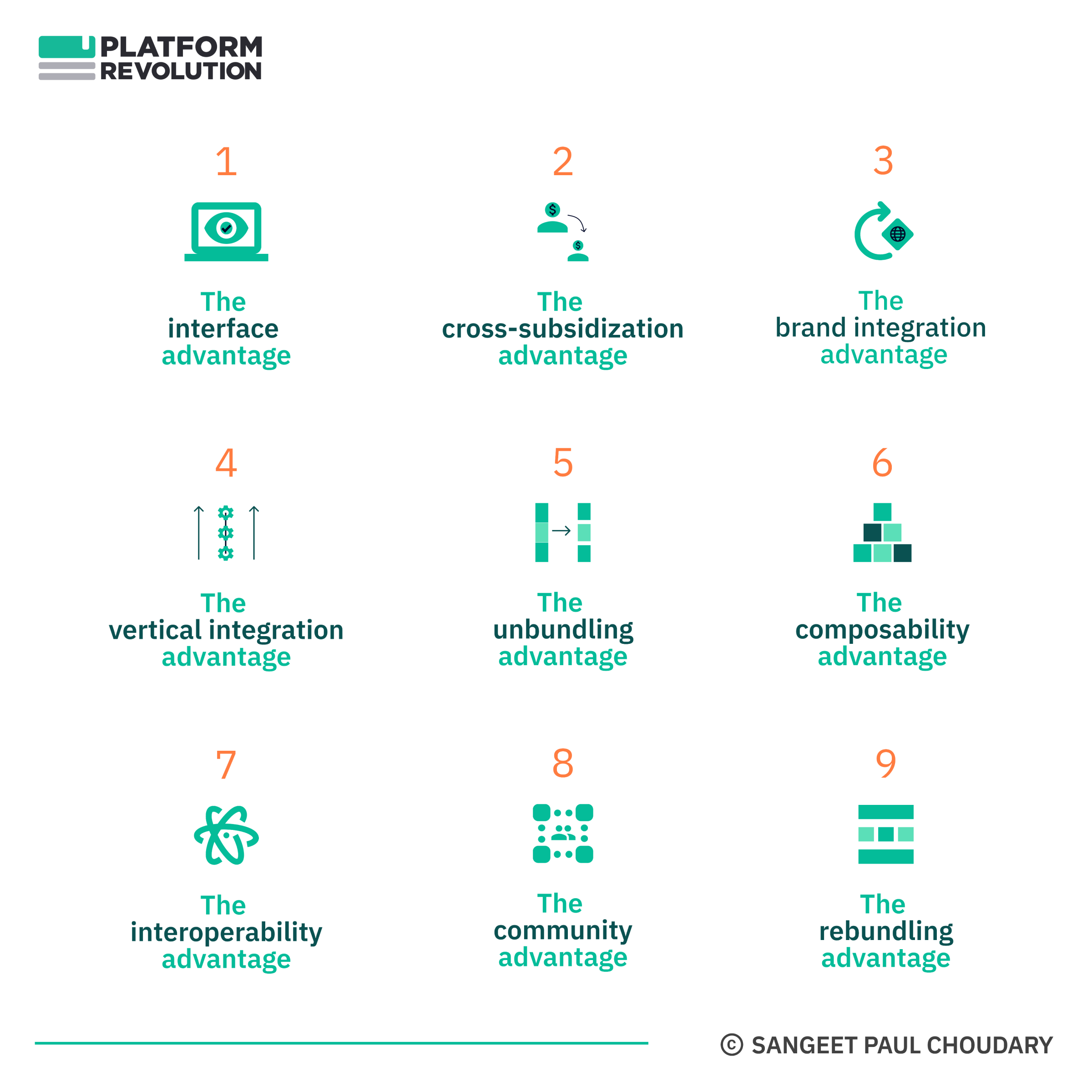Strategy
Reverse network effects – Why scale may be the biggest threat to the success of social networks
Platforms may lose value as they scale. Scale, in fact, may be the greatest threat to platforms, if not managed well.
Network effects make a platform useful as more users use it. However, beyond a certain point, adding users may make the platform less useful for every individual user. At this point, reverse network effects set in. Network effects that have thus far been positive reverse and become negative.
THE REVERSE NETWORK EFFECTS FLYWHEEL
Reverse network effects – or negative network effects at scale – are accelerated through feedback loops. The same feedback loops that power platform scale and lead to rapid traction may also magnify poor design decisions in a manner that can eventually wreck most platforms.
As noise increases on a platform, credible producers start to abandon the platform. This leads to an even higher proportion of noise on the platform, which leads to consumers abandoning the platform. As a result, a feedback loop sets in, where greater noise discourages high quality producers, leading to a further increase in noise on the platform as the percentage of high quality producers decreases. This leads to a poorer consumption experience, discouraging consumers from returning to the platform. This, in turn, leads to lower value creation, as producers feel discouraged by lower consumption and ever-increasing noise.
ChatRoulette, a network of video chatters that connects users with anyone across the world at random, saw abandonment play itself out on the platform within a very short period of time. As ChatRoulette had no checks and balances to screen users, it encouraged a range of pornographic and deviant use cases. As the network grew, unpoliced, an increasing number of deviant users joined in, leading to an exodus of genuine users. As legitimate users fled, the relative noise on the platform increased, further fueling a feedback loop that saw the site lose traction at nearly the same skyrocketing pace that it had gained it.
Myspace went through a similar cycle of abandonment. Users fled the social network faster than they had signed up for it. There were multiple factors that led to this, not least of which was the presence of a better substitute in Facebook. Myspace’s relatively poorer privacy guidelines led to undesirable experiences for many users. The site also allowed users to play around with the HTML and customize their respective pages. By giving users too much power over the platform, the social network ended up compromising the navigation experience. The social network’s focus on advertiser benefit, over user experience, did not help either. A combination of these factors drove users away en masse. As users fled the platform, the users who remained saw diminishing value in their network of friends, all of whom were leaving to sign up elsewhere.
In every story of platform scale lies the hidden potential for abandonment. Platforms need to ensure that they scale their ability to create value and monitor early signs of reverse network effects setting in.
Reverse network effects may set in for a variety of reasons. Below, we explore various manifestations of reverse network effects in today’s platforms.
Platforms that rely heavily on editorial moderation, often choose to institute a high degree of friction at the point of access, so that the platform scales (relatively) slowly but steadily.
Feel Free to Share
Download
Download Our Insights Pack!
- Get more insights into how companies apply platform strategies
- Get early access to implementation criteria
- Get the latest on macro trends and practical frameworks
ACCESS CONTROL FAILURE
Platforms are often as valuable as the participants they connect. Reverse network effects may set in due to failure of access control.
New users joining a platform may lower the quality of interactions and increase noise on the platform. Slackening control at access points can lead to an abundance of noise, instead of the abundance of value that the platform manager may have hoped for.
Dating websites often suffer from reverse network effects. In general, dating platforms have positive two-sided network effects, but this may get reversed as they scale. New users joining the network may lower the value for existing users. Dating platforms need stringent curation, either at the point of access or when users try to connect with other users.
On dating sites, women often complain of online stalking, as the community scales. Some women, eventually, abandon the community. Platforms like CupidCurated have tried to solve this problem by curating the men that enter the system, in a manner similar to restriction of access at a singles bar.
Professional networking platforms like LinkedIn exhibit similar dynamics. As more users join the platform, the number of unsolicited connection requests increases on the platform. This may irritate sophisticated users and may discourage them from continuing to participate on the platform. To counter this, LinkedIn creates friction by preventing users from communicating with distant connections. It also marks out users whose connection requests have been denied often. This ensures that users do not receive unsolicited messages, and the ones who are sending unsolicited messages are appropriately discouraged from repeating the act. This also allows LinkedIn to offer frictionless access (InMail) as a premium value proposition.
Platforms that fail to regulate access may end up with reverse network effects. However, frictionless access and creation may continue to work at scale if the platform scales its content curation well. One of the most important reasons for reverse network effects is the inability of the platform to scale its curation.
CURATION FAILURE
Content platforms like YouTube or Flickr allow content creation with low friction, to encourage activity from producers. To ensure that the content stays relevant and valuable to consumers, these platforms need to scale curation (the ability to distinguish the best from the rest) and customization (the ability to filter the most relevant content to consumers).
Curation failure occurs when the platform fails to manage the abundance of content created in the ecosystem. It fails to distinguish the best from the rest. Customization failure may result from curation failure. It may also result from the platform’s inability to create strong consumption filters.
Reverse network effects set in if content curation systems do not scale well or if the customization filters fail to improve over time.
As noted earlier in this section, platforms may curate through a combination of editorial moderation, algorithms, and community-driven tools (voting, rating, reporting etc.). Voting on YouTube, flagging a post on Facebook, and rating on TripAdvisor are examples of curation tools.
Curation mechanisms may break down as the volume of content increases, owing to one of the following reasons:
- Excessive reliance on editorial moderation that fails to scale as the platform scales.
- Curation algorithms that are too customized to the initial use cases of the platform, and do not scale well, as the platform expands to include more use cases.
- A failure to spread the culture of curation throughout the user community as the user base scales.
Platforms that rely heavily on editorial moderation, often choose to institute a high degree of friction at the point of access, so that the platform scales (relatively) slowly but steadily.
Platforms like Medium and Quora, that rely on user-generated content, often change their curation models as the volume of content production in the ecosystem increases. In its early days, the blogging-platform Medium was an invite-only platform and relied heavily on editorial moderation. As Medium opened access to all writers, it transitioned the editorial function to the community. Writers now had to submit their creations to collections, moderated by user-editors, before the article could be published. In doing so, Medium moved the editorial function from a centralized, non-scalable model to a decentralized, scalable model. The editorial power of every user-editor was determined by their ability to gather a following for their collection. In a similar vein, the Q&A platform Quora started with an editorial moderation team before scaling curation to a community-based model.
State of the Platform Revolution
The State of the Platform Revolution report covers the key themes in the platform economy in the aftermath of the Covid-19 pandemic.
This annual report, based on Sangeet’s international best-selling book Platform Revolution, highlights the key themes shaping the future of value creation and power structures in the platform economy.
Themes covered in this report have been presented at multiple Fortune 500 board meetings, C-level conclaves, international summits, and policy roundtables.
Subscribe to Our Newsletter













